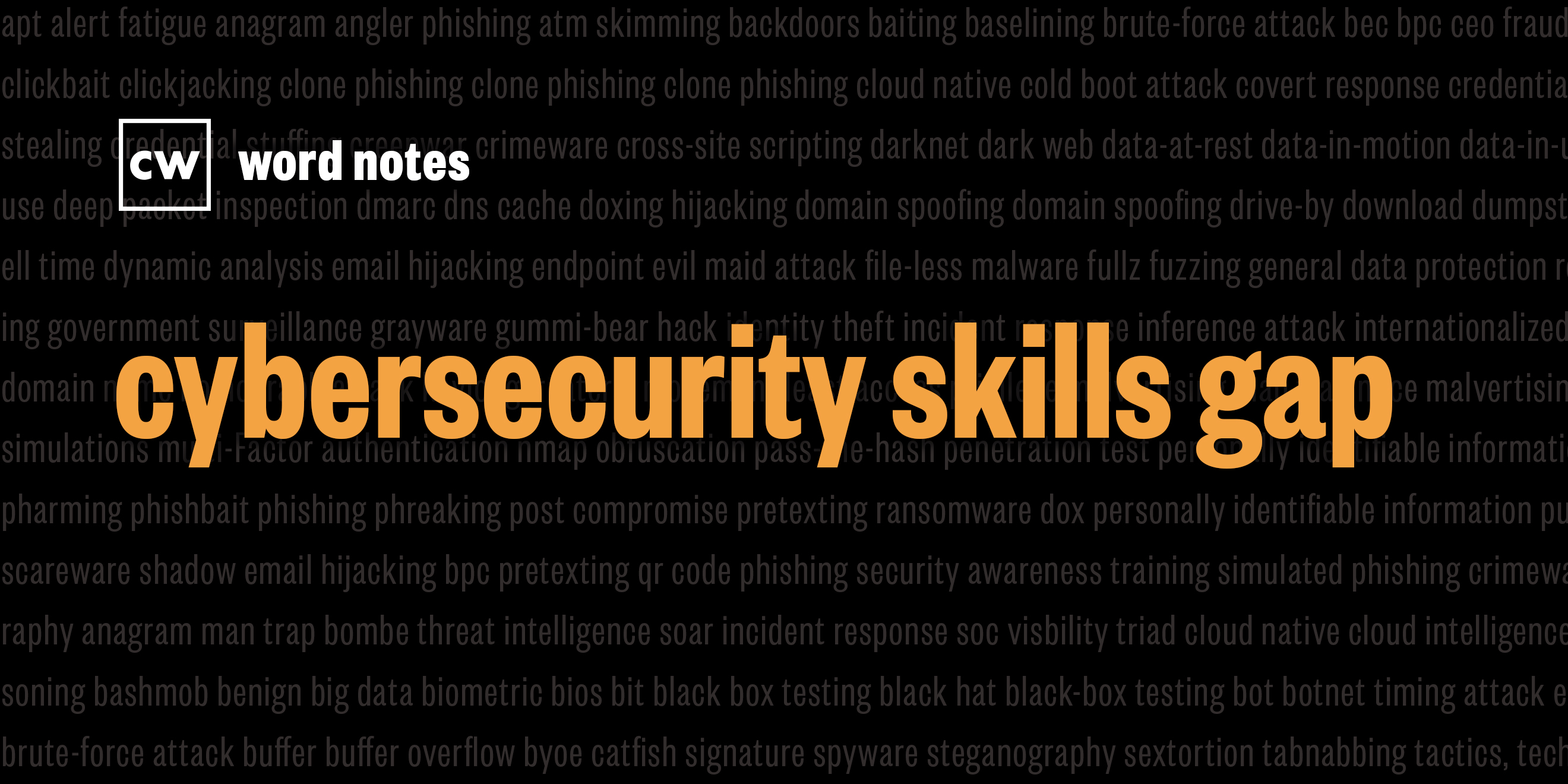
cybersecurity skills gap (noun)
Rick Howard: The word is: cybersecurity skills gap.
Rick Howard: Spelled: cybersecurity for the art and science of protecting people, networks, devices, and data from theft, espionage, hacktivism, and continuous low level cyber conflict; and skills gap for the difference between what employers need versus the existing pool of potential employees.
Rick Howard: Definition: The difference between organizational employee job requirements and the available skillsets in the potential employee pool.
Rick Howard: Example sentence: A holistic approach to cybersecurity education would contribute toward bridging the cybersecurity skills gap.
Rick Howard: Origin and context: As of November 2020, according to the International Information System Security Certification Consortium or (ISC)², just over 3 million cybersecurity positions are unfilled worldwide.
Rick Howard: The good news is that number is down from just over 4 million in previous years. There is also good news on the diversity front. Women represent 24% of the workforce and minorities 26%. Just five years ago, those numbers were in the low teens. And if you looked at women minorities specifically, those numbers were in the single digits. We are making progress and these current percentages are well ahead of the national employment average.
Rick Howard: The bad news is this recent downtick in the skills gap might be associated with the pandemic. When most organizations just froze in place in terms of hiring. The US Bureau of Labor and Statistics projects that employment for information security analysts will grow at 32% between now and 2028, which would put the skills gap right back at 4 million.
Rick Howard: At one point 5 years ago, some pundits including me thought that we could close the gap by just hiring more qualified minorities and women. While improving those percentages is a good idea in terms of a diverse workforce, that community may have had an upper limit with the number of skilled employees available from those pools.
Rick Howard: The solution then is a long-term commitment to building a qualified workforce from the ground up starting with elementary school. That commitment has to solve the problem of finding a way to keep women and minorities excited about the field throughout their educational experience, but also expanding the training to the entire potential workforce almost exponentially.
Rick Howard: We've had some success with small pilot projects, like the Girl Scouts cyber badge program. In 2018, the Girl Scouts CEO, Sylvia Acevedo, launched the first group of cybersecurity badges for their K through 12 scouts. In a generation, 2.5 million Girl Scouts will hit the streets with a strong foundation in cybersecurity.
Rick Howard: In order to fill the gap though, the community needs to scale this kind of effort across the board, or we will have no hope of ever reducing the size of the problem.
Rick Howard: Nerd reference: In a CNBC interview on August 2nd, 2019, the “On the Money” host interviews, Sylvia Acevedo about the Girl Scouts cyber badge program.
On the Money host: Check it out. Me and my brownie uniform from long, long time ago. Uh, this year the organization is introducing 42 new badges covering areas like cybersecurity, coding and the outdoors. And joining us to talk about it is Sylvia Acevedo. She's the Girl Scouts, CEO and Sylvia, it's great.
Sylvia Acevedo: Hey, thanks for having me here, Becky.
On the Money host: Thanks for coming in. Um, lots of new badges have introduced, which is very exciting as a former Girl Scout, but these are different types of badges and I'm thinking specifically of this one right here.
Sylvia Acevedo: Yes! Cybersecurity, you know, the girls love cybersecurity. The girls told us they wanted it.
On the Money host: It wasn't your idea? They came to you?
Sylvia Acevedo: No. They didn't, they didn't say cybersecurity. They said we live digital lives and we want to be safe online. And let me tell you the adoption rate has been phenomenal. Our girls badges from five to 10 year old, do you know, in the first few months, 84,000 badges have been earned. Almost 10,000 cybersecurity badges a month are earned across the country.
On the Money host: What do you have to do to get your cybersecurity badge?
Sylvia Acevedo: So what's so fun is after the girls who've earned their badges, their parents have reached out to me on social media and they say, you know, my daughter comes home and says, mom and dad, "What's our protocol for the wifi passwords? And when's the last time that we cleaned out our browsers and our cache?" You know, they're learning things that are so relevant to the world today. But it's not just our cybersecurity. We also introduced so many STEM badges: coding for good, for example. So girls are learning yes about coding, app development, game development. And what's great is that we start at age five, but go all the way to age 18.
Rick Howard: Word Notes is written by Nyla Gennaoui. Executive produced by Peter Kilpe, and edited by John Petrik and me, Rick Howard. The mix, sound design, and original music have all been crafted by the ridiculously talented Elliott Peltzman.

